Discussion: This week we are going to talk about Composition. So, let’s get started.
Composition is simply what you have decided to include and leave out of any given photo. Ultimately composition is the organization of a subject within a frame. It’s the subtle layout of key elements that can make a good photo great! Learning a few basic rules can help you understand why you like a photo, and then how to help you make it happen again when you are behind the camera!
The Five S’s of Composition -
1. See the Possibilities: Stop and look at the things and the people you surround yourself with. See what is unique about them. Now think about all of the different ways you look at them - now capture them in all of the ways we just discussed -
Their uniqueness (button nose, crocked smile etc)
From above and below
From far away and close-up
From the front and the back
And from all sorts of angles
Before you get started lets review a couple of good rules of composition here
A. THINK VERTICAL when shooting people. People are taller than they are wide, so shoot them that way! Even when you are just shooting someone’s face , turn your camera. Faces and bodies have very strong vertical lines. If you turn your camera and shoot vertically you will find it much easier to “fill your frame” and you will get stronger, better images.
This is a good rule for “things” too. If it is taller that it is wide, shoot it vertically (what they call portrait). If it is wider than it is tall, shoot it horizontally (what they call landscape).
B. IT’S ALL A BALANCING ACT! If you are cropping tightly at the top, do the same at the bottom or your subject will appear to be floating out of the top. When you are photographing a person (or object with a definite top & bottom) full length, be sure to leave more space above their head than below their feet. Otherwise they will appear to be floating in space.
C. DON’T GET ALL OUT OF JOINT! Be careful not to crop photos of people at their joints (elbows, wrists, waist & knees). Doing so will make them look as though they are missing parts. Crop above or below the joints.
D.THE EYES HAVE IT! The most expressive part of the human body is the face. And the most expressive part of the face are the eyes. Pay close attention to your subjects eyes. If you make a mistake with the nose or mouth it is not as big a deal as messing up the eyes. Watch for the little reflective lights in people’s eyes, these are called catch-lights. These will illuminate the eyes and make your subjects face look more alive and sparkly.
2. Subject: Learn to really emphasize the subject you are shooting! We talked a lot about this last week, let’s refresh. . . How do we really emphasize our subject?
By filling the frame - making it clear to your viewers who or what your subject is. Getting up close and personal does 2 things
It simplifies your image
It emphasizes your subject
By deciding what our photographic style goal is here - do we want to merely document our subject or do we want to give them that universal appeal and capture the essence of our subject?
3. Simplify: Practice simplifying your images by observing how lines, shapes, scale, viewpoints and the Rule of Thirds influence your images.
In 1. See the Possibilities we talked about lines and how they affect our images. Now let’s talk about Shapes, Scale, Viewpoints and the Rule of Thirds.
The Rule of Thirds - is based on the concept that the strength of an image improves when the main parts of the photo are placed in key locations away from the center of the frame. Placing the subject away from the center creates visual tension because it is not the way we usually see things.
How’s that for a definition! You will probably never shoot a photo thinking “now, I need to cause some visual tension by placing things on an imaginary grid, so that they wont be viewed the way I look at them with the naked eye”. BUT, when you capture an image that really POPS, it almost always has followed this rule.
Picture your frame segmented into thirds, both horizontally and vertically like a tic-tac-toe board (so you will have 9 equal boxes). If your subject falls perfectly centered you will might find yourself with a boring, so-so photo. To spice it up, move your subject onto one of those imaginary lines, or even where they intersect.
When composing a portrait, it is a good idea to keep your subject’s head (or in close-ups, the subjects eyes) on or near an intersection.
I have made you each a “Rule of Thirds Grid” to take home and use. It will fit on any 4x6 photo, in either landscape or portrait format. Use this grid at home to check your printed photos.
Shapes - Shooting groups can be one of the most challenging of your photographic ventures. When you are shooting a group of more than two people or things you need to think about the “shape” they make when they are together. Triangles are particularly pleasing and easy to achieve. Professional photographers tend to put the most significant subjects in the center and build out from there. But since we are not professionals and we want pictures with “heart” in them, you can start out traditionally and then just allow them to interact with each other. Try to resist the urge to make them all look directly at the camera and say cheese! Professionals also discourage lining people up - they call this the firing squad method. Thankfully, again we are not professionals. Depending on how you position your subjects, a line-up might be just the thing. Think of lining them up in birth order, not just by height. Also sometimes you can line up just parts of them and tell a whole story. Think of a a family portrait of just bare feet. From the worn and big grandpa to the soft and tiny of the newest addition.
Scale - The size or scale of your subject is very important in the composition of your photos. Scale is simply the relationship between the size of at least two elements. If you want to draw attention to the size of your subject, add another element or person that will visually illustrate how big or small your subject is. This is much like when a catalog will show a dime next to an item they are selling so you know how big the item really is. A dime certainly wont help you draw attention to the size of your toddler so try some of these tricks. . . Stand her on a dining room chair. We all understand the size of a dining chair, and standing her on it reminds us how small she is. Or maybe take that same toddler and stand her in front of her father’s legs, shooting only her (remember she is your subject) and the legs of her father (there is no need to see his face, it is understood why he is there). When shooting outdoors let nature provide your scale for you - use trees and boulders and whatever else you see.
Viewpoint - this is the point from which you literally are standing as you view your subject. Where you stand is not always the best place from which to take your photo. For example, if you are 5’5” tall and take all of your pictures from a standing position you are going to get the same viewpoint on everything you shoot. This will all add up to some pretty boring photos. So try this, bend down. Lay on your stomach, lay on your back, stand on your tip toes, climb up on a chair or table. Just move yourself into new and different positions so that you can see things in a new and different way.
Here are 4 tips on how your viewpoint affects your subject:
Shooting up at a subject gives a sense of power to your subject.
Shooting down at your subject gives a feeling of innocence or vulnerability to your subject.
Shooting at the subjects eye-level give a sense of equality.
For a more commercial look to your photos, try tilting your camera. Look for a dominate line in the photo and tilt your camera either towards or away from that line.
4. Setting: Figure out how to exploit the setting for the best possible image using the location, background and any props. As hard as it is, try not to covet other people’s locations. It is way too easy to fall into the “if only” trap. If only I lived near the beach, If only I lived in a place that had great old barns, or Victorian houses or___________, you fill in the blank. Remember you are shooting from your heart and you do not need these settings to make great photos that mean something to you. Instead look around you at your surroundings. This world is full of wonderful things and places. It is full of colors and textures. Yes, even here, where you are! So start looking differently at your own neighborhood and the places you drive past everyday. Once you really start looking you will find so many interesting places to shoot your photos, that you will have to make a check-off list so that you get to them all!
Here are some places for you to start - or at least to consider and get your own creative ideas goings:
Downtown Phoenix! There are old buildings, wonderful architecture, parks and statues. St Mary’s Basillica is a great place - but be respectful. There are old Victorian homes being restored down there and old schools as well as lots of new buildings. It is full of color and texture and a sense of excitement lives down there.
Lake Pleasant (or Bartlett Lake, or Saguaro Lake, you choose) Here you will find lots of color, lots of water, and lots of great lighting. The Marina is full of boats that make a wonderful and exciting backdrop to your photos. There is a ton of plant life and even some “beaches”.
New Housing Developments are a great place to go! Often our new developments put in beautiful parks and green belts. They also offer wonderful water features in some like fountains, ponds and waterfalls.
Model Homes are really cool! They are usually furnished to the nines and have big open windows that offer great natural lighting indoors. A lot of them have beautiful pools and patios too - its like having a million dollars worth of props at your disposal for free!
Our endless deserts! Wow - you are only minutes away from the desert where ever you live here! There you will find so much texture and even color. Look for old saguaro skeletons, dry washes and mesquite trees. Maybe you will even find some old bones! But be sure to take water with you no matter what time of year it is.
Papago Park is a great afternoon of picture hunting. There you will find the most beautiful rocks to use as backdrops, as well as cactus and other plant life. While you are there, stop by the Botanical Gardens or the Zoo.
The Borgata Shopping Center in Scottsdale is another great place to use as a setting. Great courtyards and textured walls.
The Big Resorts in town, Big resorts equal big pools, big landscaping and big, beautiful lobbys!
Watch the side of the road as you drive from here to there. Now that it is Spring, wildflowers will start popping up everywhere. And if you “fill your frame” like I taught you it will look like you are in a field of flowers instead of just on the side of the road!
Okay - you get the idea now. Just open your eyes to see things in a whole new way.
Now that you have learned to look for the perfect setting around you, it is time to learn how to “Make” the perfect setting when you need to. I keep a Prop Bucket in my garage at all times. It is easy to grab and put in the trunk of my car if I need too and is handy at the house when I need it there too. Here’s all you need to start your own Prop Bucket:
Rubbermaid Tub
1 Black and 1 white Queen Sized sheet
(2) 99cent clamps from Home Depot
That’s really all you need, but it is fun to add more stuff as you find it. I like to keep some netting, tulle or gauze from he fabric store or Walmart (check the bargain table). I also watch the end of season sales for big holiday and seasonal props at 50% off to use the next year. I keep some silk flowers in there and a $5 garage clamp light just in case. It is all very inexpensive and easy to come by. It just takes a little imagination and thought, but you will be amazed at how glad you will be to have it when you need it!
5. Share the Story: When an author writes his best seller he uses words to paint pictures in our minds. As we read the words he has written we can see the story unfolding, we can see where the subject is, what he is doing and sometimes even smell what he smells. The author does not just merely tell us who, what, when, where and why and expect us to be engaged. He tells us the whole story. He shares the feelings his subject has, What his world looks like, what he looks like. He gives us all the minute details so we can truly engage with his subject.
As a photographer you need to strive to do the same, only in reverse. You need to use your pictures to write words in your audience’s mind. You need to tell the story in all of it’s minute details with your images. This is what will make your viewer become engaged in what you have to “say” with your image. To do this you need to show relationships between people and make use of all of the symbols in life - things like precious pieces of jewelry passed down from generation, worn and tattered blankets that your children still love and carry with them, Shoes covered in mud from a hard day’s work. Street signs that tell us where you are going or maybe where you have been. When we see these relationships unfolding and see the importance of the symbols you have chosen to include in your images, and they are composed well we will start to concoct a story of our own. So even if we do not know the people or the symbols personally, if they are organized well within the image and the emotion is captured along with them they will still tell a story.
This is a very hard thing to do. I dare say it is harder to turn pictures into words than to turn words into pictures. But it is well worth the effort when you get that one photo that speaks volumes.
Session Two Homework Assignment - Same Subject Composure
This week I want you to concentrate on the rules of composure we have discussed. I want you to pick a single subject (living or inanimate) and shoot your subject in the same basic setting in the ways listed below. Have all 12 photos printed at the lab of your choice in 4x6 format. You may choose matt/luster or glossy prints - it is your choice. Or you might want to mix it up a bit and print some in each. Label the backs of your prints with your name and how the photo was shot (high angle, etc). Be sure to bring these prints with you to class next Saturday (the 19th).
*Wide angle and close up
*Vertical (portrait) and horizontal (landscape) orientations
*Smack in the middle of the frame and off to one side
*From a high angle (looking down) and from a low angle (looking up)
*From the front and from the back
*Just a part of them - not the whole subject
*Now with a prop or symbol that tells us something about your subject
All of this is meant to help you see the same thing in several different ways and to help you organize and simplify the items in your images. This homework assignment will probably be more challenging for you than the last one, but don’t give up. Take the time to plan out what you want to shoot and how you will execute each of the shots. This might be a great time to take a drive to one of the places I talked about and just make an adventure out of your assignment. However you choose to do it, have fun and enjoy the process!
Quote of the Day
To me, photography is an art of observation. It's about finding something interesting in an ordinary place... I've found it has little to do with the things you see and everything to do with the way you see them.”
Elliott Erwitt
To me, photography is an art of observation. It's about finding something interesting in an ordinary place... I've found it has little to do with the things you see and everything to do with the way you see them.”
Elliott Erwitt









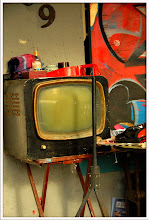

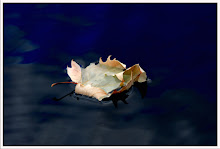
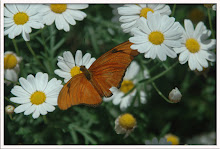
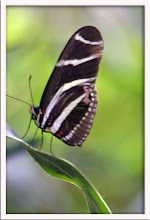

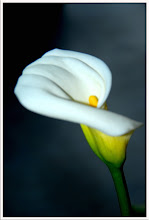


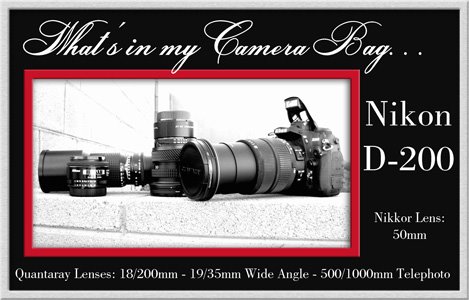
No comments:
Post a Comment